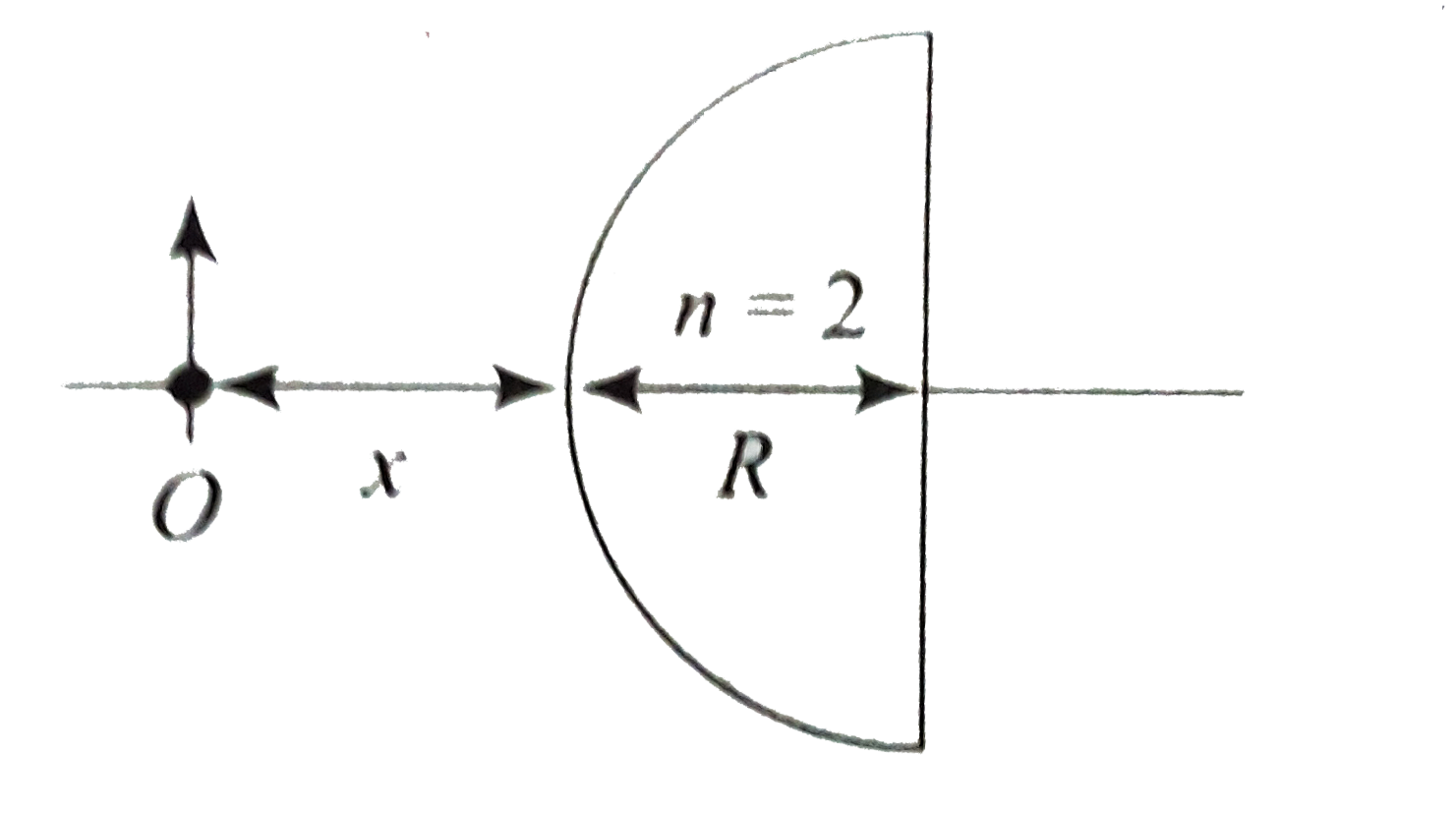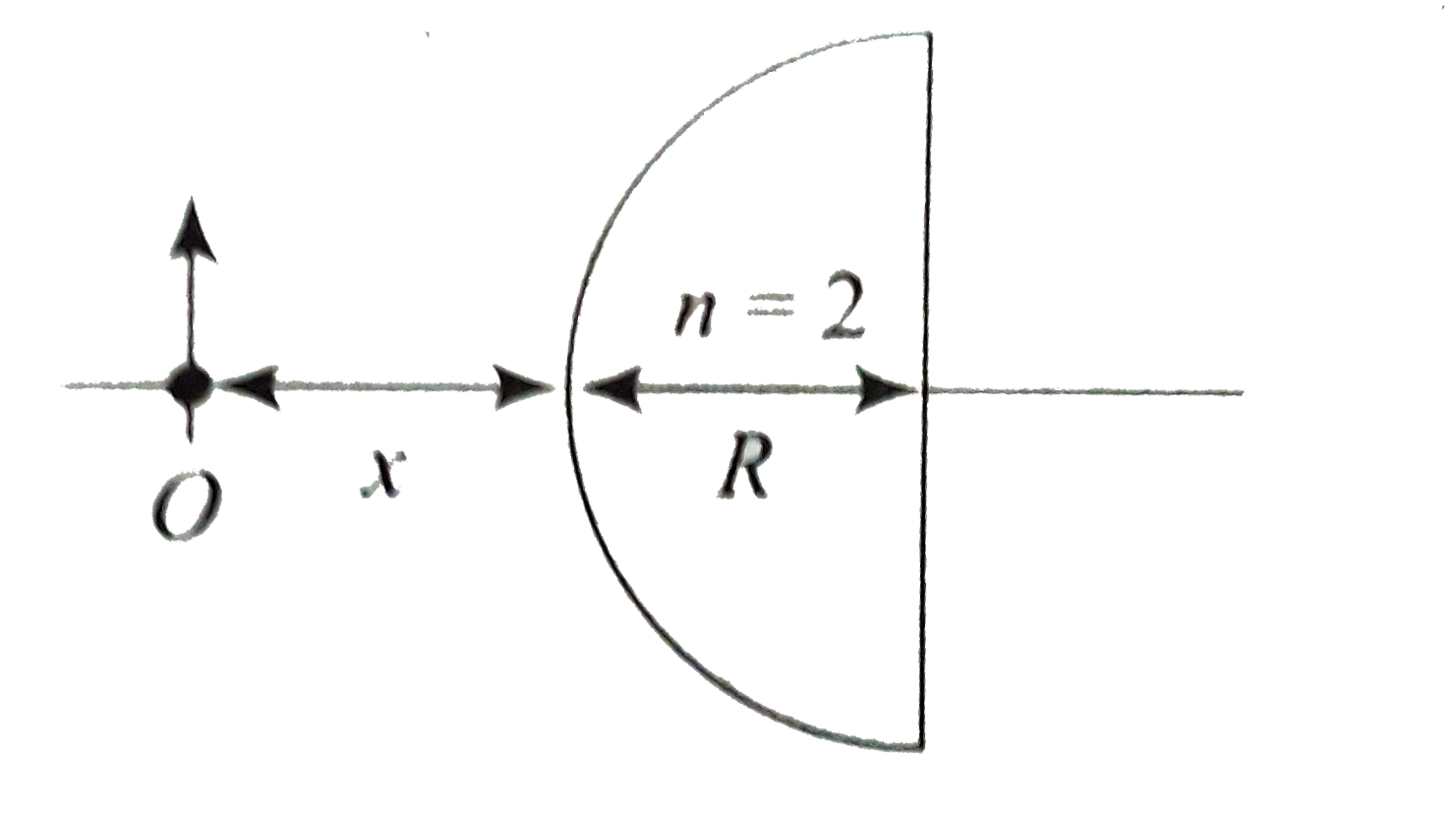A converging beam of rays is incident on a diverging lens. Having passed through the lens the rays intersect at a point 15cm from the lens. If the lens is removed, the point where the rays meet, move 5cm closer to the mounting that holds the lens. Find the focal length of the lens.
f=10cm
f=15cm
f=30cm
f=40cm
The correct Answer is:c.
1v−1u=1f Here, v=15cm and u=10cm
Hence, 1f=115−110=−130cm
|f|=30cm
Topper's Solved these Questions
- GEOMETRICAL OPTICSBook:CENGAGE PHYSICS ENGLISHChapter:GEOMETRICAL OPTICSExercise:Assertion-Reasoninig
Explore 2 Videos
- GEOMETRICAL OPTICSBook:CENGAGE PHYSICS ENGLISHChapter:GEOMETRICAL OPTICSExercise:Linked Comprehension
Explore 51 Videos
- GEOMETRICAL OPTICSBook:CENGAGE PHYSICS ENGLISHChapter:GEOMETRICAL OPTICSExercise:Subjective
Explore 26 Videos
- ELECTRON,PHONTS,PHOTOELECTRIC EFFECT & X-RAYSBook:CENGAGE PHYSICS ENGLISHChapter:ELECTRON,PHONTS,PHOTOELECTRIC EFFECT & X-RAYSExercise:dpp 3.3
Explore 15 Videos
- HEATING EFFECT OF CURRENTBook:CENGAGE PHYSICS ENGLISHChapter:HEATING EFFECT OF CURRENTExercise:Thermal Power in Resistance Connected in Circuit
Explore 27 Videos
Similar Questions
Consider a transparent hemispher (n=2) in front of which a small object is placed in air (n=1) as shown in figure.

Q. For which value of x, of the following , will the final image of the object O be virtual?
View SolutionConsider a transparent hemispher (n=2) in front of which a small object is placed in air (n=1) as shown in figure.

Q. Consider a ray starting from O which strikes the spherical surface at grazing incident (i=90∘). Takin x=R, what will be the angle (from normal) at which the ray may emerge from the plane surface.
View SolutionA ray of light is falling on a glass sphere of μ=√3 such that the incident ray and the emergent ray, when produced, intersect at a point on the surface of the sphere. Find the value of angle of incidence.
View SolutionThe figure shows different graphs between stopping potential (V0) and frequency (v) for photosensitive surface of cesium , potassium , sodium and lithium. The plots are parallel. Correct ranking of the targets according to their work function greatest forst will be

View SolutionA room AC run for 5 hour at a voltage of 220V The wiring of the room constant of Cu of 1mm ratio and a length of 10m consumption per day is 10 commerclal unit What fraction of it goes in the joule heated in wire? What would happen if the wiring is made of aluminum of the same distances? [ρcu=1.7×10−8Ω,ρA1=2.7×10−8Ωm]
View SolutionA converging beam of rays in incident on a diverging lens. Having passed through the lens the rays intersect at a point 15 cm from the lens. If the lens is removed, the point where the rays meet, move 5 cm closer to the mounting that holds the lens. Find the focal length of the lens.
View SolutionA parallel beam of rays is incident on a convergent lens with a focal length of 40cm. Where a divergent lens with a focal length of 15cm be placed for the beam of rays to remain parallel after passing through the two lenses.
View SolutionA concave lens is placed in the path of convergent rays. The rays are focussed on the axis 15 cm behind the lens. Where would these rays have been focussed in the absence of the lens ? Focal length of the lens is 30 cm.
View SolutionA converging beam of light is incident on a concave lens of focal length 20 cm. In the absence of the lens, the beam converges at a point 10 m behind the lens. Find where the beam will converge/diverge after refraction.
View SolutionSome rays falling on a converging lens are focussed 20 cm from the lens. When a diverging lens is placed in contact with the converging lens, the rays are focussed 30 cm from the combination. What is the focal length of the diverging lens?
View Solutionअभिसरित किरणों का एक पुज लेंस पर आपतित होता है। लेंस के विपरीत दिशा में गुजरने के बाद लेंस से 15 सेमी की दूरी पर मिलती है। जब लेंस को हटा दिया जाता है। तो किरणें जहाँ मिलेगी वह लेंस की ओर 5 सेमी खिसक जाता है लेंस की फोकस दूरी है।
View SolutionConvergent beam of light is passed through a diverging lens. Light rays after passing lens
View SolutionA converging light beam incidents on diverging lens. After passing through lens, rays intersect at 15 cm behind the lens. If lens is kept away, then these rays intersect at 5 cm. Focal length of lens is ..
View SolutionA lens produces a magnification of - 0.5. Is this a converging or diverging lens ? If the focal length of the lens is 6 cm, draw a ray diagram showing the image formation in this case.
View SolutionA converging beam of rays in incident on a diverging lens. Having passed through the lens the rays intersect at a point 15cm from the lens. If the lens is removed, the point where the rays meet, move 5cm closer to the mounting that holds the lens. Find the focal length of the lens.
View SolutionA converging beam of rays is incident on a diverging lens. Having passed through the lens the rays intersect at a point 15 cm from the lens. If the lens is removed, the point where the rays meet, move 5 cm closer to the mounting that holds the lens. Find the focal length of the lens.
View Solution
